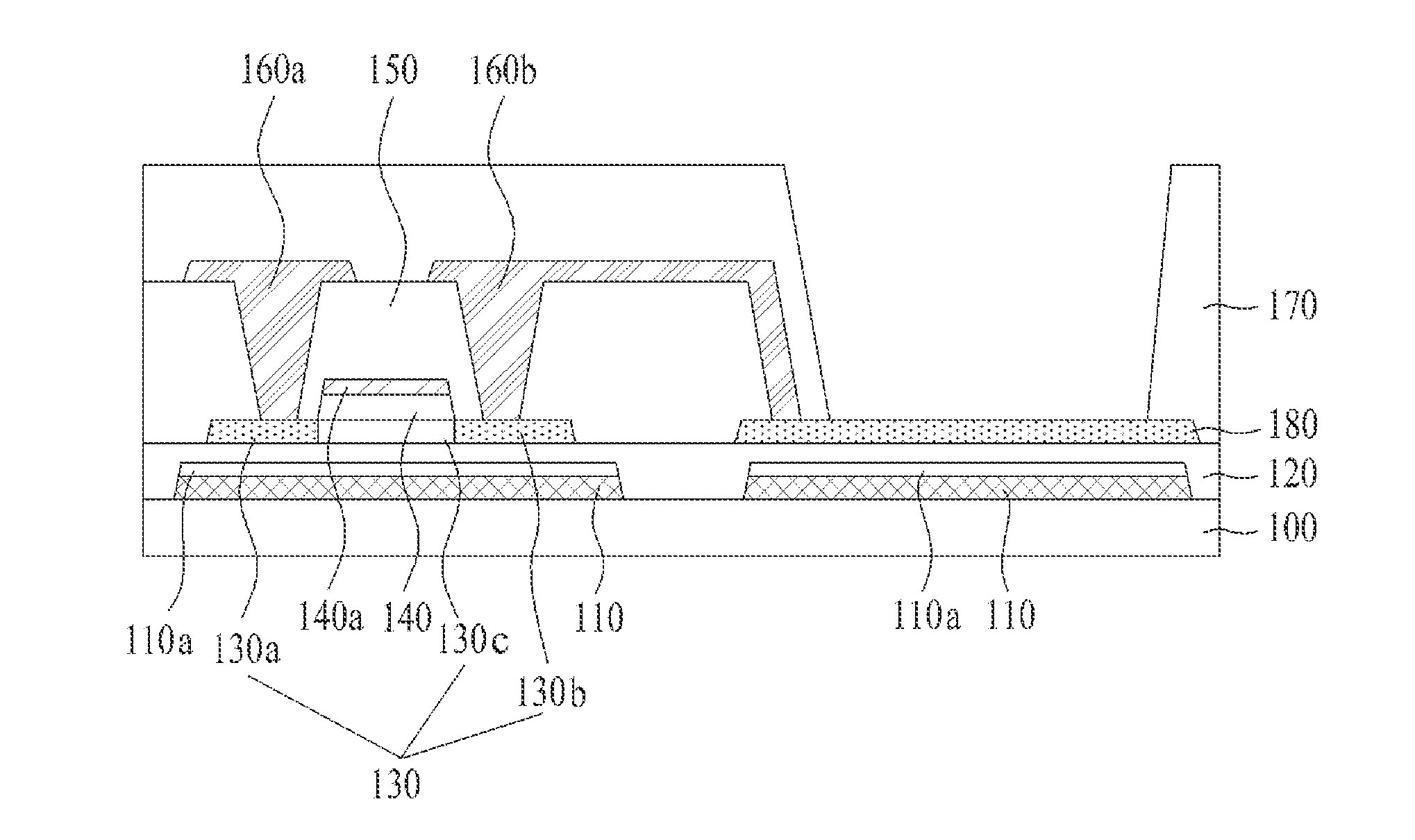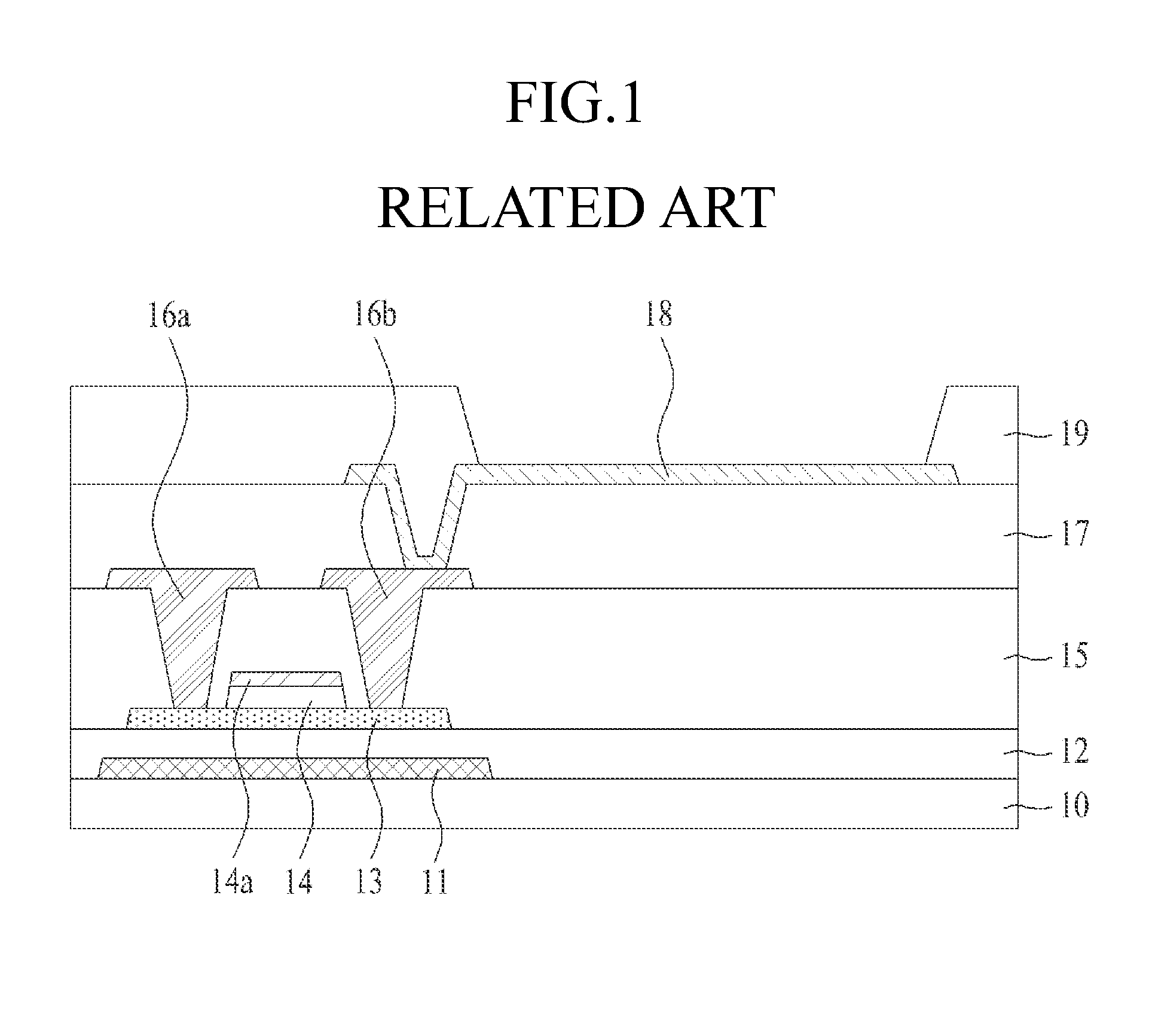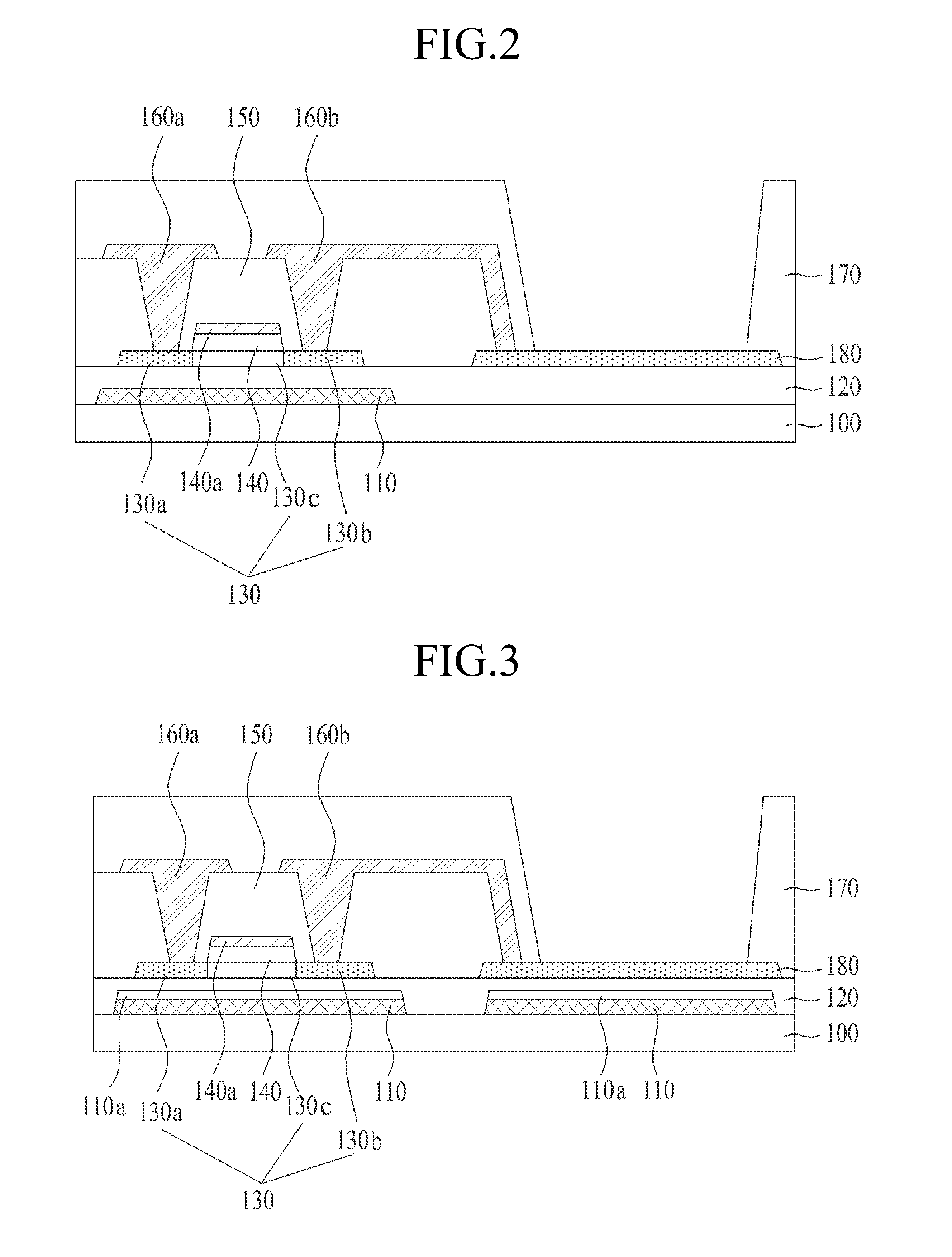Organic light emitting display device and method for fabricating the same
a technology of light-emitting display and organic materials, which is applied in the direction of thermoelectric device junction materials, semiconductor devices, electrical apparatus, etc., can solve the problems of increasing fabrication costs and process time, and achieve the effects of reducing the number of masks, reducing fabrication costs, and simplifying the fabrication process
- Summary
- Abstract
- Description
- Claims
- Application Information
AI Technical Summary
Benefits of technology
Problems solved by technology
Method used
Image
Examples
first embodiment
[0068]FIGS. 6A to 6E are sectional views for specifically explaining the plasma treatment process and the third mask process illustrated in FIG. 5C.
[0069]As shown in FIG. 6A, a gate insulation material 220a and a gate electrode material 220b are deposited in turn on the surface of the substrate 100 formed with the oxide semiconductor layer 130. Then, a photoresist pattern 230 is formed on the gate electrode material 220b through a photolithographic process using a photo mask (not shown) such as a half tone mask and a slit mask. The photoresist pattern 230 having a first height is formed at a semi-transmission region P3 of the photo mask, whereas the photoresist pattern 230 having a greater second height than the first height is formed at a cut-off region P1 of the photo mask. Also, a transmission region P2 of the photo mask is formed to expose the gate electrode material 220b.
[0070]Through an etching process using the photoresist pattern 230 as a mask, the gate insulation and gate ...
second embodiment
[0074]FIGS. 7A to 7D are sectional views for specifically explaining the plasma treatment process and the third mask process illustrated in FIG. 5C.
[0075]As shown in FIG. 7A, a gate insulation material 220a and a gate electrode material 220b are deposited in turn on the entire surface of the substrate 100 formed with the oxide semiconductor layer 130. Then, a photoresist pattern 230 is formed on the gate electrode material 220b through a photolithographic process using a photo mask (not shown). The photoresist pattern 230 is formed at a cut-off region P1 of the photo mask, and a transmission region P2 of the photo mask is formed to expose the gate electrode material 220b.
[0076]The gate insulation and gate electrode materials 220a and 220b are etched through an etching process using the photoresist pattern 230 as a mask, as shown in FIG. 7B. Consequently, the gate insulation film 140 and gate electrode 140a having the same pattern are formed on the oxide semiconductor layer 130, and...
PUM
 Login to View More
Login to View More Abstract
Description
Claims
Application Information
 Login to View More
Login to View More - R&D
- Intellectual Property
- Life Sciences
- Materials
- Tech Scout
- Unparalleled Data Quality
- Higher Quality Content
- 60% Fewer Hallucinations
Browse by: Latest US Patents, China's latest patents, Technical Efficacy Thesaurus, Application Domain, Technology Topic, Popular Technical Reports.
© 2025 PatSnap. All rights reserved.Legal|Privacy policy|Modern Slavery Act Transparency Statement|Sitemap|About US| Contact US: help@patsnap.com



